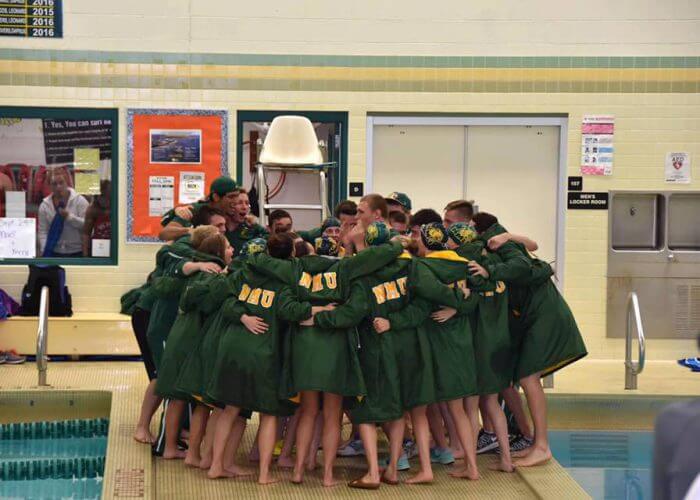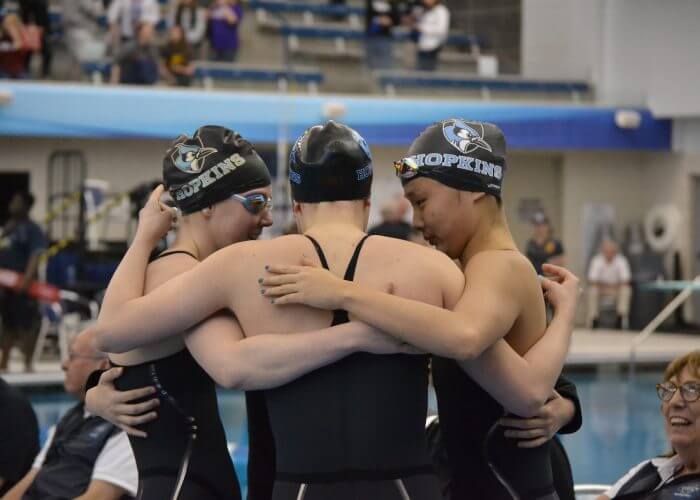Swimming Across the Pond: Perspective from an International Swimmer on Transitioning from the U.K. to America

By Rachel Helm, College Swimming Intern.
As an international swimmer from the United Kingdom, only movies could portray what being an athlete would be like in America. So when the option arises to swim in the U.S., many athlete happily jump at the opportunity.
While you may not think that swimming could be much different from one developed country to the next, take the following adjustments into consideration: They can change your entire experience of the sport!
Swimming the “wrong way” ’round
In the U.K., the swim lanes rotate round each other. One lane swims clockwise, while the other swim anti-clockwise – a perfect combination to avoid that painful smack of a freestyle hand, or worse, a butterfly stroke collision to the wrist. Over the pond, everyone swims up the right side of the lane. Be prepared for numerous hand collisions.
Team Cheers

Photo Courtesy: Paula Probstfeld
Be prepared to learn team cheers: This is not just something that you see happen in the movies. Every meet begins with a team cheer, and it gets loud. You will end up screaming your team cheer in order to out-do the other teams.
Swimming in Yards
In the U.K., most pools are either 25-meters or 50-meters. Pools in America are 25-yards, which is roughly 22.8m. Depending if you’re a sprinter or a distance swimmer, those missing meters either mean the world to you, or you need more of them. If you’re a backstroker, be prepared to search for the flags once you return home, as those extra meters feel a long ways away.
Different terminology
Fly kick becomes “dolphin kick,” free kick becomes “flutter kick,” turns are now called “flip turns” and training is now called “practice.” You’ll be met with many confused-looking faces when you ask what time “training” is, but they’ll steer you in the right direction. Before you know it, you’ll pick up on the lingo pretty quickly.
Suiting up

Photo Courtesy: Emily Cheng
Suiting up (wearing a race suit) is what you do at every meet in the U.K. Wearing a tech suit is the normal thing in which to compete. In America, you only suit up roughly three times a year: the mid-season meet, conference and NCAA championships if you qualify. At all other meets, you wear a normal swim suit.
Shorter season
The season in the U.K. typically goes from August to August. It is a long and grueling season. In America, the season starts in September and ends in March, depending if the swimmer qualifies for NCAAs. If not, it usually ends in February, which is when most conference championships take place. The American season flies by quickly, and is over in a blink of an eye.
It’s all about the team

Photo Courtesy: Peter H. Bick
Every race, dive and every cheer is all about the team. Every point matters, every place matters, and every single stroke matters. Everything you now do is for the team. You really become one big family!
Becoming an International Swimmer
Choosing to swim in America was a great decision, yet becoming an international swimmer comes with a few changes that require an adjustment period. Native swimmers: please be kind to your neighbors from across the pond during this time and share a few laughs along the way.
-All commentaries are the opinion of the author and do not necessarily reflect the views of Swimming World Magazine nor its staff.




Good insights, Rachel!